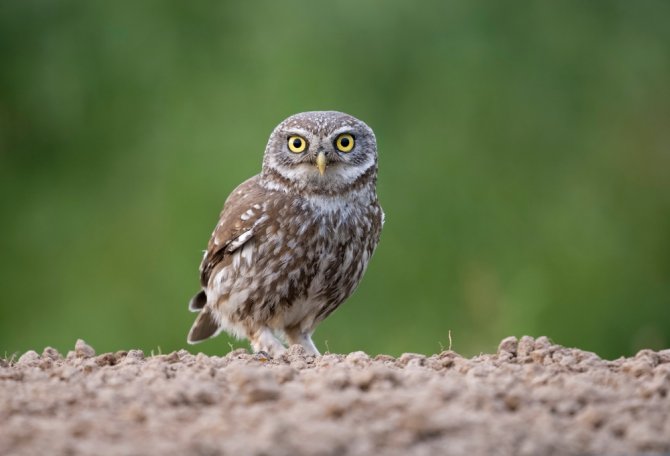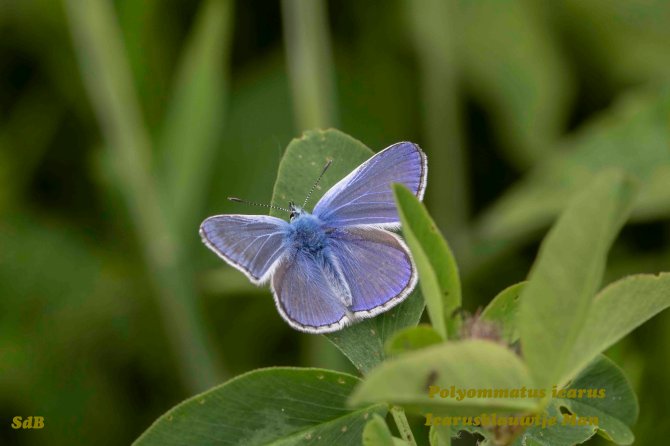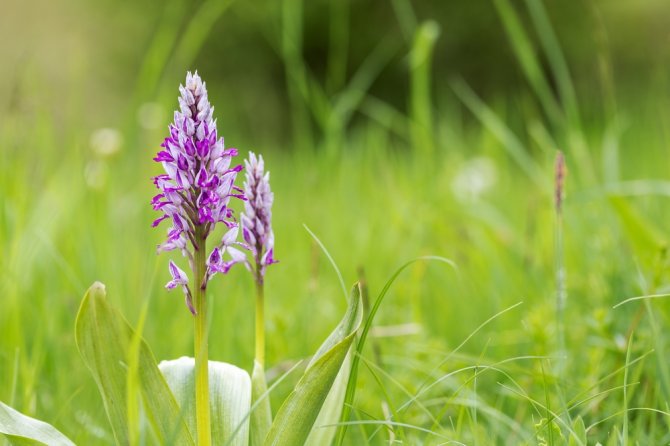
News
"Come outside with us everyone, and we will search......"
This is how an old Dutch song about the golden oriole begins. Jeroen Sluijsmans saw this bird in 2022, while cycling across campus with a South African ornithologist. "That was an amazing day for me," he said of the experience. Others have also reported unusual sightings, such as the rare dark whiteface dragonfly. Would you like to explore nature on campus too? Then join the Biodiversity Challenge!
Biodiversity is important for all of us. Not only is it beautiful and nice to see many different species and habitats, but we all depend on the life around us for our food, health and climate. This is why the Wageningen Biodiversity Initiative (WBI) is organising a Biodiversity Challenge for the third time already: together we explore nature, count species and experience how important it is to protect biodiversity.
Excursions on campus
The 2024 Biodiversity Challenge starts on 2 May, and it lasts for no less than two months, until 28 June. That gives everyone ample opportunity to join all kinds of excursions: for example, a wasp excursion, a bird tour or an ecological walk across campus. All those excursions are accompanied by a student or staff member as a guide. So you can learn from your own colleagues!
Bram de Vos, director of the Environmental Sciences Group, is excited already: "I think it is a very good initiative to do the Biodiversity Challenge on the WUR campus, and also in the city of Wageningen. For me, it is not just about discovering and counting species, but about realising the value of nature and biodiversity as the basis of our existence. It's fun to discover in a playful way what I don't know."
Counting species
We will also count species again this year. After counting 1375 species last year, we obviously want to improve on that number. In 2023, we counted mainly plants, birds and insects; this year we hope to add water creatures and soil organisms for an even higher score on waarneming.nl. Anyone who wants to join the count is most welcome: just download ObsIdentify and get started! All observations between 2 May and 28 June on WUR grounds, both on Campus and other WUR locations, automatically count towards the final total.
Together in Europe and in Wageningen
WUR is not organising the Biodiversity Challenge alone. 18 European Life Sciences universities are participating, from Romania to Iceland. In addition, this year we are organising activities in Wageningen city centre together with the municipality of Wageningen, Stadslab and KNNV.
Save the date!
- 22 May: "WUR works for Wageningen!", organised by WUR Student Challenges, where we will use canoes to collect waste from the city canal, build flower containers and get explanations from a biodiversity expert.
- 25 May: 'Biodiversity Challenge: urban nature under your nose', a public event around the Grote Kerk, with an info market, nature excursions in Wageningen, children's activities, films and much more.
- 30 May: Evening programme in the bblthk Wageningen: 'WTF is Biodiversity!? - Discover nature right under your nose'. Nina Fatouros will share impressive nature photos and Liesje Mommer will tell you all about biodiversity. Read more>
So what's there to see? 3x amazing nature on campus

Jeroen Sluijsmans, Knowledge Valorisation Officer at Wageningen Environmental Research
'Together with PhD candidate Andries, I cycled to campus on Sunday evening to explain the route to him. Just before, he had arrived from South Africa to do bird research in the Netherlands and in his home country. On my familiar cycling route, where I observe the seasons daily, he stopped halfway by a group of alders. "Look, there's a Little owl there" he explained. Although ObsIdentify had already improved my eye for nature, it became clear to me that it could not yet match that of this trained birder. On our way to Zodiac, we first drove into Lumen nature garden for some mallards and orchids. As we rounded the corner, a yellow-black bird flew ahead of us amid loud singing. It wouldn't be... Several colleagues had heard it there, but never seen it. My "wow feeling" was confirmed by the eye of the South African master. This day was truly beyond compare.'

Sjoerdtje de Boer, coordinator KNNV Field Group Butterflies and Dragonflies
'During the Biodiversity Challenge in 2023, the KNNV Field Group Butterflies and Dragonflies participated five times with four to five participants at a time. To our surprise, there were many interesting things to see on the WUR campus. Especially the Dassenbos pond along the Vijfde polder proved to be very popular with a large number of dragonfly species, and so also with the Field Group participants. In fine, warm weather, we could not get enough of the beautiful spectacle of dragonflies of many different species foraging above the water and/or chasing each other. And resting animals in the roadside vegetation were perfect for quiet close-up viewing and photographing. In total, we observed 15 species of dragonflies, including a specimen of the dark whiteface dragonfly, which is rare in the Netherlands. We also saw several dragonflies in the Lumen garden, including masses of white-legged damselfly. The number of butterflies observed was on the lower side, as the Bioblitz period largely coincided with the annual butterfly dip in June. Nevertheless, we still saw eight butterfly species and two diurnal moth species. These included not only some very common species (such as Small white and Speckled wood), but also 'fun' species such as European common blue, Small heath, and two protected species: Brown argus (also a Red List species) and Large skipper.'

Mikay Breet, teaching/research associate at Biosystematics
'The Campus is home to an amazingly high diversity of plant species. This is partly because species have been planted and sown, but many species have also ended up here naturally. In May and June, many flowering orchids can be observed. For instance, along the little pond at the beginning of the Lumen garden, the beautiful marsh helleborine orchid (Epipactis palustris) grows in large numbers. Further up, across the small bridge, marsh orchid (Dactylorhiza sp.) and the very rare military orchid (Orchis militaris) can be found. Also here is the dainty quaking-grass (Briza media), my favourite grass. This grass has very small heart-shaped spikelets hanging loose in a wide plume. The plant gets its name from the fact that if you touch quaking-grass even very gently, the spikelets begin to tremble.
Along the Orion Pond, other flowering plants can be admired along the water's edge, such as southern marsh orchid (Dactylorhiza praetermissa) and the big trefoil (Lotus pedunculatus). Two years ago, a bee orchid was found here. This orchid has beautiful large flowers, somewhat reminiscent of a bee. This is no coincidence, as this way the plant attracts bees, which then pollinate the flowers. The plant does not produce nectar, but fools the bees, who consider the flower a potential mating partner.'